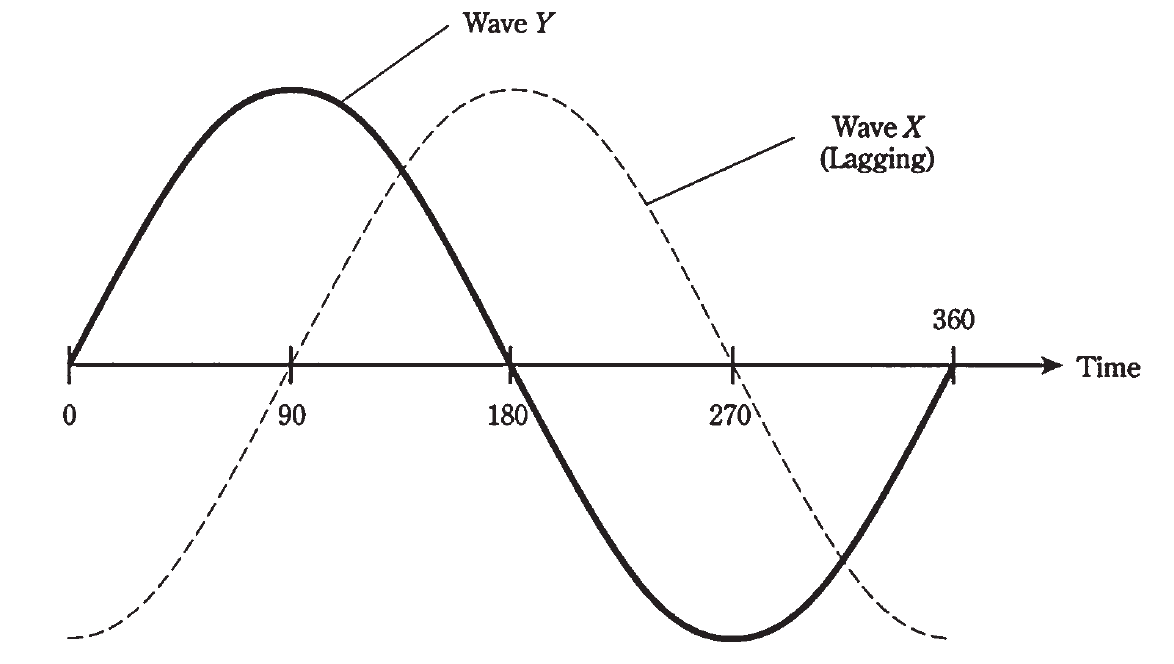
Lagging phase
 المؤلف:
Stan Gibilisco
المؤلف:
Stan Gibilisco
 المصدر:
Teach Yourself Electricity and Electronics
المصدر:
Teach Yourself Electricity and Electronics
 الجزء والصفحة:
224
الجزء والصفحة:
224
 30-4-2021
30-4-2021
 2612
2612
Lagging phase
Suppose that wave X begins its cycle more than 180 degrees, but less than 360 degrees, ahead of wave Y. In this situation, it is easier to imagine that wave X starts its cycle later than wave Y, by some value between 0 and 180 degrees. Then wave X is not leading, but instead is lagging, wave Y. Figure 1 shows wave X lagging wave Y by 90 degrees. The difference could be anything between 0 and 180 degrees

Fig. 1: Wave X lags wave Y by 90 degrees.
You can surmise by now that leading phase and lagging phase are different ways of looking at similar “animals.” In practice, ac sine waves are oscillating rapidly, sometimes thousands, millions, or even billions of times per second. If two waves have the same frequency and different phase, how do you know that one wave is really leading the other by some small part of a cycle, instead of lagging by a cycle and a fraction, or by a few hundred, thousand, million, or billion cycles and a fraction? The answer lies in the real-life effects of the waves. Engineers and technicians think of phase differences, for sine waves having the same frequency, as always being between 0 and 180 degrees, either leading or lagging. It rarely matters, in practice, whether one wave started a few seconds earlier or later than the other.
So, while you might think shows wave X lagging wave Y by 270 degrees, or that the diagram of Fig. 1 shows wave X leading wave Y by 270 degrees, you would get an odd look from an engineer if you said so aloud. And if you said something like “This wave is leading that one by 630 degrees,” you might actually be laughed at.
Note that if wave X (the dotted line in Fig. 1) is lagging wave Y (the solid line), then wave X is somewhat to the right of wave Y.
 الاكثر قراءة في الألكترونيات
الاكثر قراءة في الألكترونيات
 اخر الاخبار
اخر الاخبار
اخبار العتبة العباسية المقدسة


